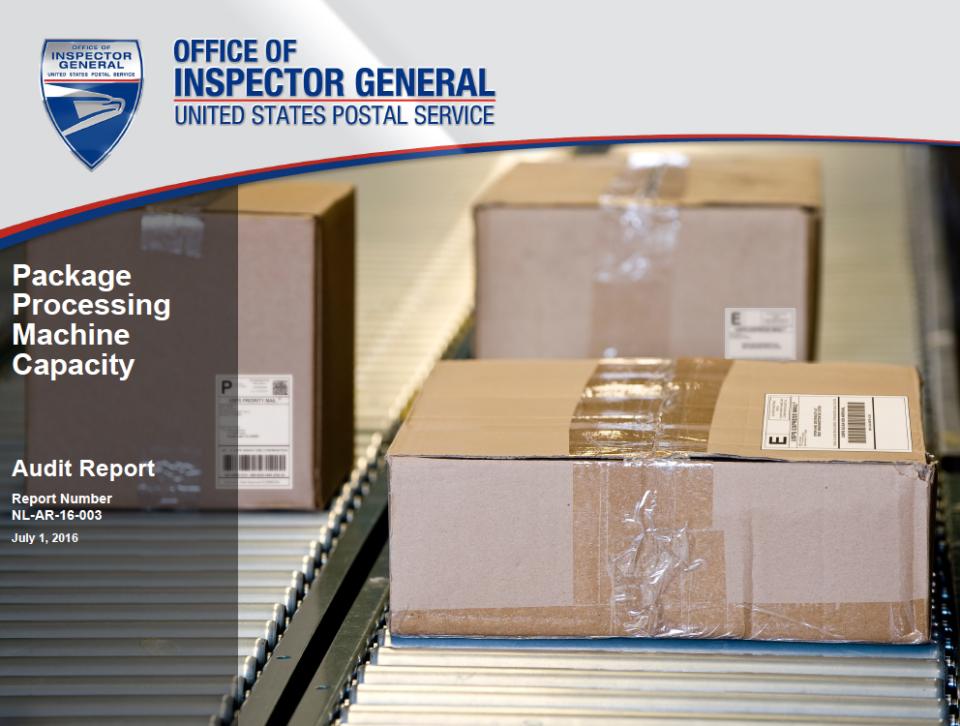Package Processing Machine Capacity
Background
Strong consumer demand for goods purchased over the Internet has driven package volume growth in a declining mail market. This growth provides the U.S. Postal Service an opportunity to counter declining or stagnant mail volume. In August 2015, the Postal Service projected that package volume would grow at a minimum of [redacted] annually through 2020.
The Postal Service’s strategy for the increasing package volume is part of its Delivering Results, Innovation, Value, and Efficiency (DRIVE) Initiative 43. DRIVE is a management process to improve business strategy development and execution. DRIVE Initiative 43 is intended to establish a package processing network to support projected package growth.
Currently, the Postal Service uses 389 package sorting machines and manual sorting to process packages and bundles – groups of addressed pieces secured together as a unit – for delivery. The package processing machines are the Automated Parcel and Bundle Sorters (221), Automated Package Processing Systems (74), Parcel Sorting Machines (63), and Small Package Sorting Systems (31).
Our objective was to assess the Postal Service’s package processing machines’ capacity to meet current and future package and bundle volume.
What The OIG Found
The Postal Service has sufficient package processing machine capacity to meet its growing package and bundle volume through at least [redacted] when processing machines are operating at full operational performance levels (the rate and time at which a machine processes mail). However, during the peak (or holiday) season the Postal Service will need to continue to manually process excess package volume. The Postal Service’s operational philosophy is that it is [redacted].
The current staffing of package processing machines and mail arrival times does not always support full operational performance levels. The Postal Service could improve package machine performance and reduce manual package sorting by adjusting machine staffing and mail arrival schedules.
When package processing machines are operating at full operational performance levels the Postal Service should be able to process an average of about [redacted] packages monthly. However, based on current operational performance levels, the Postal Service processes about [redacted] packages monthly. In FY 2015, average monthly package volumes were about [redacted] packages.
Based on our projected package growth rate, we estimated that the Postal Service has sufficient package processing machine capacity through at least [redacted]. In addition, about [redacted] packages projected to be processed manually each month could be processed by package sorting machines operating at full operational performance levels. This would reduce annual manual processing costs by about [redacted] in each of the next 3 years.
What The OIG Recommended
We recommended the vice president, Network Operations, develop a plan to operate package processing machines at full operational performance levels to reduce manual mail processing and support continued package growth.

